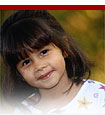|
What knowledge and skills do children possess when they start school? How prepared are they for the social and academic demands of the classroom? Can they get along in a large group of children? Can they sit still and pay attention? Are they interested in learning? How do knowledge, skills, and behavior vary across individuals and among groups of children, such as older versus younger pupils, girls versus boys, and children from high-risk as opposed to more ordinary family circumstances? Why is it important to know what children are like at school entry?
The answers to this question are important for policy and practice. What a child knows and how he or she behaves are products of both genetic endowment and the child's experiences before entering school (Willerman 1979; Plomin 1990). Thus, measures of children's knowledge and behavior at school entry can serve as indicators of how well families, child-care institutions, and preschool programs prepare children for school. At the same time, these measures provide guidance about what kind of curriculum might be appropriate for the first year of school (Freeman and Hatch 1989; Knudsen-Lindauer and Harris 1989). If teachers are aware of the skills and abilities that the typical child has mastered before the first day of class, teachers and school systems are less likely to design a course of study that is either too challenging or not challenging enough for the typical child. In this regard, it is useful to appreciate not only what the average child knows at school entry but also what the range of knowledge is across an entire class of children.
Group differences at school entry are important for appraising how well the schools have done at the end of the first and subsequent school years. Although differences in achievement found at the end of the school year may have been present at the beginning of the year, we cannot know this unless skills are measured at the beginning of the year. Without this information, we cannot properly appraise how much growth has occurred. It may be concluded erroneously that schools are producing superior achievement because of the high caliber of their instruction, when, in fact, schools may be maintaining (or even diminishing) advantages that their pupils had when entering school.
Why is it difficult to assess early knowledge and skills?
Although measures of children's knowledge, skills, and behavior at school entry are valuable, such measures are not easy to obtain. Most children can neither read nor write when they enter school, so we cannot simply distribute test booklets and ask young children to provide machine-scoreable answers to a series of multiple-choice questions. In-person, one-on-one assessments are required. Each assessment session should not be lengthy because young children tire easily and have limited attention spans. Even individualized assessments may not reflect a beginning pupil's knowledge because of individual differences in shyness with unfamiliar adults or because the child comes from a family in which English is not the primary language spoken at home.
To complicate matters further, experts in child development have recommended that appraisals of children's status at school entry not be limited to academic knowledge and skills but should include evaluations of "the whole child" (Resource Group on School Readiness 1991). For example, the National Education Goals Panel's Technical Planning Group on School Readiness identified five domains of development that are important to a child's preparation for school: physical well-being and motor development; social and emotional development; approaches to learning; language usage; and cognition and general knowledge (Goal One Technical Planning Group 1993). The Group recommended that assessments of school readiness should involve the collection of information from parents and teachers, as well as the direct assessments of the children themselves.
There is also the question of which year should be considered as the first year of school, kindergarten or first grade. Although school attendance is not mandatory in most states until first grade, national surveys of parents of early elementary pupils show that 98 percent of primary school children attended kindergarten before entering first grade (West, Germino-Hausken, Chandler, and Collins 1992). Thus, kindergarten is now the initial year of formal schooling for nearly all children in the United States. |



